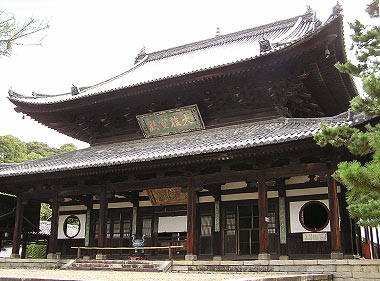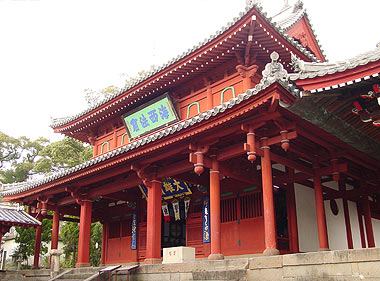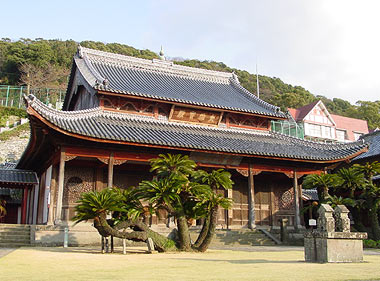| Also
called daiyuuden εYa or *daiden εa. Lit. great leader's treasure hall. The principal hall in a temple of
the Oubaku ©@ sect, one of the three main sects of Zen Buddhism in Japan.
The sect was brought to Japan by the Chinese priest, Yin-yiian (Jp; Ingen
B³ 1592-1673) who established Manpukuji δέ (1654) in Kyoto. The Daiyuuhouden (1668) is a large, 7 x 6 bay structure, (22.10m x 21.33m) including an open
columnade across the front. The Soufukuji Daiyuuhouden (1648)
in Nagasaki prefecture, is 5 bays deep and 4 bays wide (14.14m x 13.39m)
and is slightly smaller than the Daiyuuhouden at Manpukuji. A double
onion head with flame motif attached, and a podium covered with sand, called getsudai δ, are unique to these temples. A roofed, open corridor
runs along the front and both sides of the hall. The Daiyuuhouden at both temples are excellent examples of the Zen style *zenshuuyou T@l. Both Daiyuuhouden also house famous statues of *Shaka ίή and his closest disciples Ananda ’οΙ, Mahakasyapa Makakashou ζdήtg
and 18 arhats juuhachi rakan \ͺ
Ώ. |





